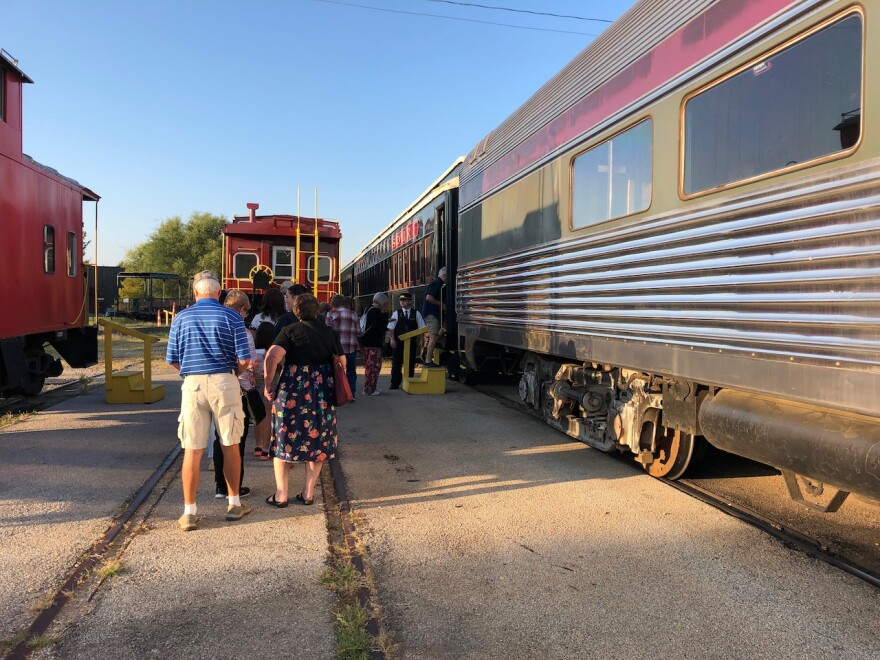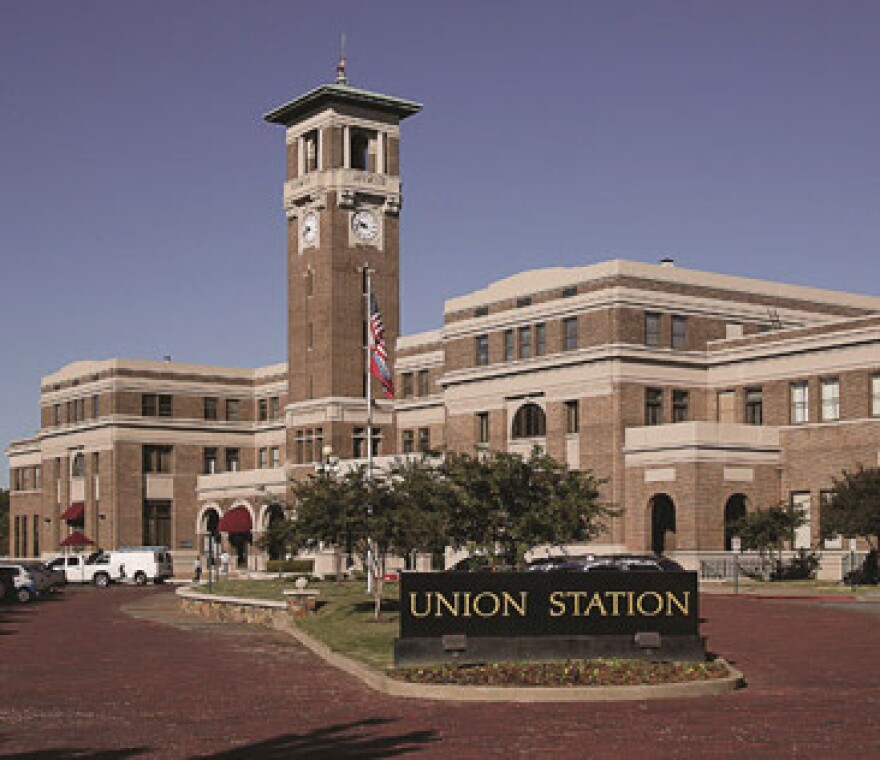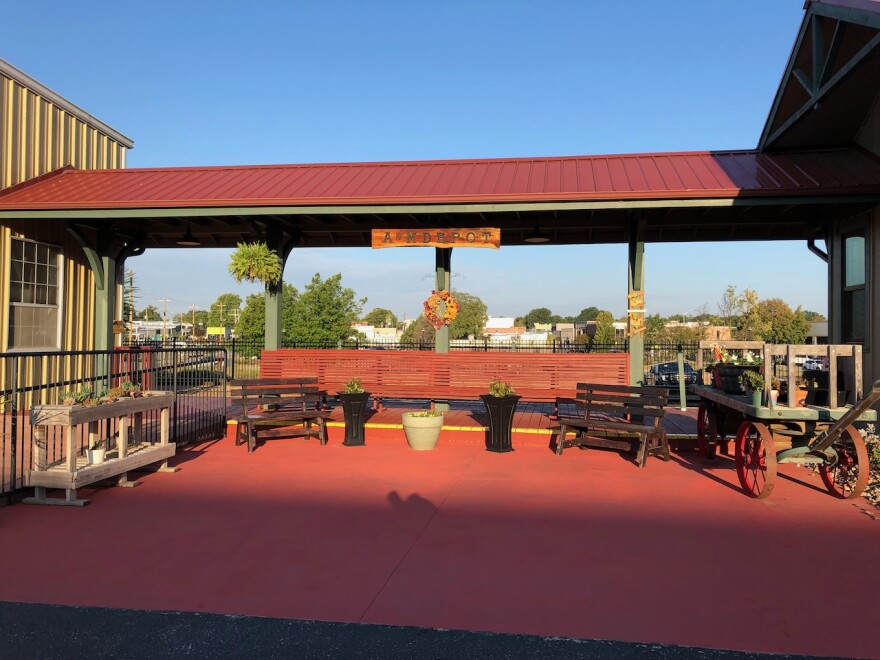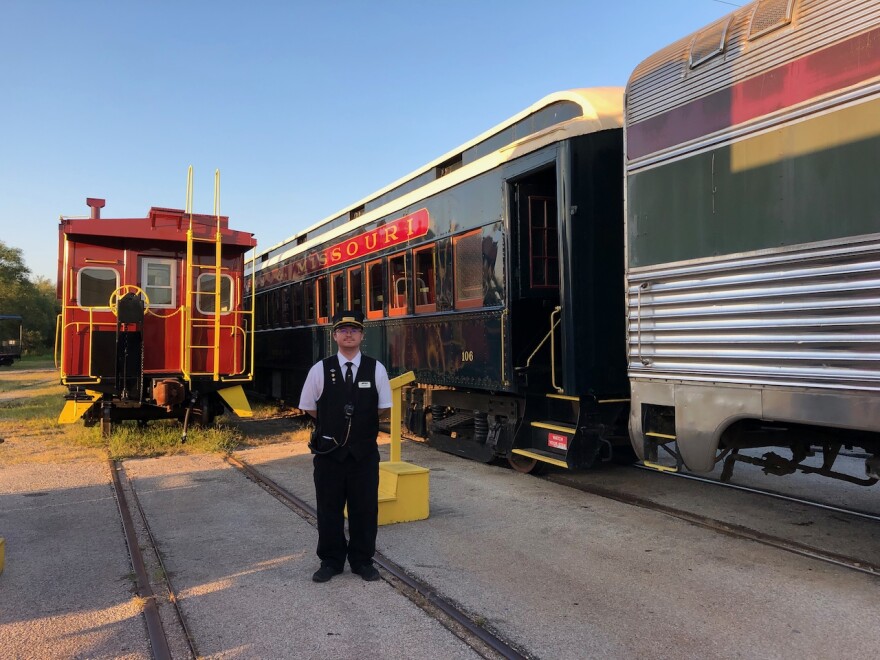Couples and families nostalgic for passenger rail gather for departure at the Arkansas & Missouri Railroad excursion train depot in downtown Springdale to experience an era gone by.
“Car 109 all aboard!" shouts conductor Nick Walker, as he guides ticket-holders into two vintage railcars. The engineer sounds the horn as the train leaves the station southbound towards the Boston Mountains, final destination Van Buren.

In the early 20th century, trains criss-crossed Arkansas hauling timber, minerals, produce and lots of people. Laying thousands of miles of track took decades of planning, legislation, and investors. Today only a few dozen rail lines remain in Arkansas used to transport freight.
Richard Billingsley is founder and president of NWA Go, a citizens group that promotes green mass transit. He spends his time lobbying municipal, state and federal lawmakers as well as posting on socials about the rationale of reviving passenger rail in the region.
“The general consensus I hear from state or from federal representatives is we didn't know people back home were interested in that,” Billingsley said.
Billingsley said public pressure, strategic planning, plus state and federal funding could one day make commuter rail in northwest Arkansas a reality once again.
“I rode the Washington DC metro," he said. "It was very fast, it covered a lot of distance very quickly. It’s built above ground and I would love to see that here,” he said.
Billingsley has also pitched the development of intrastate high-speed rail, known as bullet trains, popular in Europe and Japan to the Arkansas Department of Transportation’s Railroad Coordination Section, directed by Greg Nation.
“We only have one passenger rail route," Nation said. "That is the Texas Eagle which goes from the Northeast part of the state to Texarkana. The Texas Eagle runs from Chicago down to San Antonio. Arkansas is a pass through.”
The Texas Eagle is operated by Amtrak. Ridership fluctuates, Nation said, and has never been a popular mode of transportation due to only two trains scheduled per day, with departures occurring in the middle of the night. But a high-speed rail spur extending to and from northwest Arkansas could accelerate ridership.

“It is possible and it is something that will be in our state rail plan to evaluate because with anything of this nature and magnitude you'll you'll need to have it identified in the plan first,” Nation said.
He is referring to the 2015 Arkansas State Rail Plan, a comprehensive 300-page document that details the function, inventory, performance, and financing of the state’s 2,600 miles of rail lines, all privately owned. A high-speed passenger rail study on a route extending from Little Rock to Memphis was published in 2019. The 2015 state rail plan is currently being updated. Nation is hosting public meetings around the state and will soon post a digital survey online.
“So we'll take a lot less sitting around with an an engineering mindset," he said, "and taking in what the general public would like to see and what they think, that way we can come with a better answer.”
Nation said he biggest hurdle is building passenger rail from Little Rock to Northwest Arkansas.
“I've heard people talk about using existing rail, things of that nature, which is a wonderful idea," he said. "But you've got to bring that rail and all those crossings up to speed, and I think some people don't realize the incredible amount of economic investment that would take. You’ve got to find those funding sources willing to invest in that.”
Nation said updating the new state rail plan, expected to be complete early next year, will spur communication across the state about ways to link Arkansas’ population centers via high-speed passenger rail, that could interconnect with local commuter light rail.
Tim Conklin, executive director for the Northwest Arkansas Regional Planning Commission, recently hosted a passenger rail plan meeting to gather both public and official comment for a new state rail plan.
“In 2014 we did have a what's called an alternative analysis," he said, "where we had a consultant come into northwest Arkansas to specifically look at light rail along I-49, and bus rapid transit along the 71B corridor — the 30 plus mile corridor from Fayetteville, Springdale, Rogers, and Bentonville — and then also looked at commuter rail utilizing the corridor for the Arkansas and Missouri Railroad.”
Subsequent planning failed, he said.
Growing commuter traffic congestion and demand for zero-carbon transportation modes are expected to attract future federal transit administration funding for urban districts that can prove measurable rail ridership in places like Arkansas. Conklin said Northwest Arkansas’s population will reach one million within two decades, so it will just a matter of time.

“As we move into the future," Conklin said, "it's very important that we have a mix of land uses, we have population densities, employment densities that support alternative transportation choices, mobility choices for everybody.”
Mobility choices must also include things like mass bus transit, rental e-bikes and scooters as a secondary public conveyance for railway passengers to make their final destination.
“We just all need to work together to make sure that we're becoming transit ready,” Conklin said.








